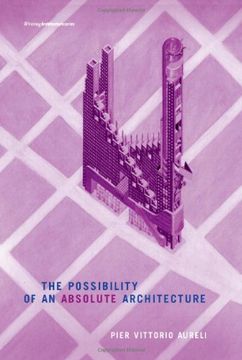
The Possibility of an Absolute Architecture (Writing Architecture) (in English)
Pier Vittorio Aureli (Author) · The Mit Press · Paperback
1 reviews$ 25.68
$ 29.95
You save: $ 4.27
Choose the list to add your product or create one New List
Go to My Wishlistsen cuanto al producto, esta bien...es lo que esperaba. en cuanto al servicio por parte de ustedes, aunque se demoró 2 días más de lo estipulado, creo que lo hacen bien, porque frente a la pregunta sobre la ubicación del envío, las respuestas fueron oportunas.
Do you have a question about the book? Login to be able to add your own question.
